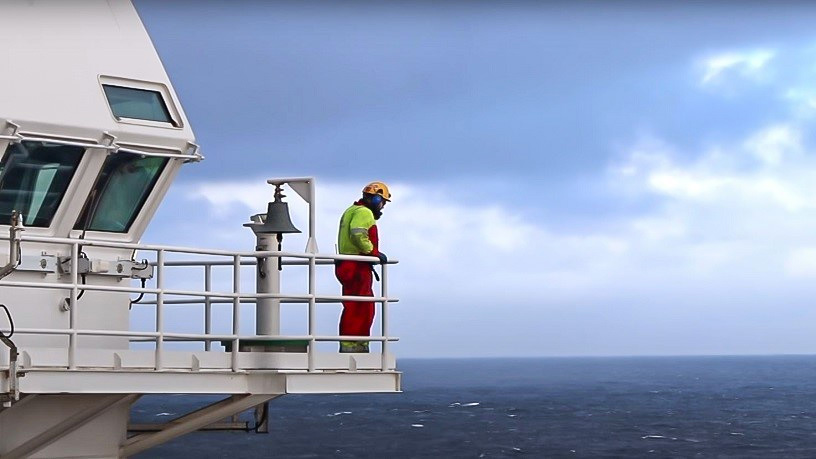OWS Sets a New Casing Running Record for Equinor in the North Sea
OWS has once again exceeded its previous tubular running speeds through continuous improvements in technology, planning and collaboration with Odfjell Drilling on board the Deep Sea Atlantic.
“Anyone can run. But if you want to run fast for a long time, then you have to train.”
That’s the philosophy of Odfjell Well Services (OWS) Product Line Manager, Bjarte Arentzen, who credits the old adage of ‘practice makes perfect’ – along with collaboration, technology and rigorous planning – as being behind the team’s latest run record, on the Tordis field, located in the Norwegian North Sea.
Equinor achieved regulatory approval to extend the field-life of Tordis in September 2019, with drilling operations beginning in March 2020 from Odfjell Drilling’s Deep Sea Atlantic semi-submersible (DSA).
Continuing a long-term collaboration with Odfjell Drilling (ODL), OWS was contracted to provide a range of technology solutions and services; including drill pipe, wellbore cleaning tools and tubular running services.
Setting new records
Working together as one team, OWS and ODL set a new performance record, delivering an average run rate of 43.1 joints per hour (j/h) on the entire well. In addition to exceeding their previous record of 41.4 j/h – set in 2018 for any casing that can be run in 17 1/2″ hole – this result also marked a new record for Equinor in running 13-5/8” casing.
In fact, of the fastest runs completed globally by Equinor over the past 15 years, Odfjell have been behind all of them, apart from one. So, to what does the team chalk-up their success?
Performance and collaboration go hand-in-hand
Cato Gjesdal, Sales & Project Engineer at OWS, is responsible for helping clients to optimize their tubular running operations. He believes that, while technology has an important role to play, equal to this is the competence and experience of the teams involved, both on- and offshore, who work together seamlessly to deliver success.
“Here on the Norwegian Shelf, we partner with our colleagues at ODL on every rig that they are on and have worked with them for many years. There are benefits that come with that level of familiarity,” Cato Gjesdal said.
“Our performance on the DSA really shifted gears when we worked together with Equinor on the Johan Sverdrup field, where we drilled around 20 wells. This latest achievement, on Tordis, is the culmination of many years of collaboration with ODL. The steady increase in performance we have been able to achieve has come hand-in-hand with our increased familiarity with the rig, the processes and the equipment,” he added.
“Preparation is also crucial. The time you spend planning the details wins you minutes and, at Odfjell, we explore every possible opportunity to improve efficiency without impinging on our first priority, safety. Complementing this are our personnel – particularly our TRS crew, who are motivated, highly experienced, and have put a lot of time and effort perfecting the way they operate,” Bjarte Arentzen mentioned.
It’s not just the average run rate on this job that commands attention. When you look at the cased hole data, the numbers are just as impressive – coming in at 47.4 j/h, compared to the team’s previous record of 44.3 j/h, achieved in 2017. Open hole run rates ended up at 36.81 j/h.
On a typical rig, it can take around 14 hours to run a 13-3/8” casing. On the DSA, the same operation can be done in around 4 ½ hours. When you consider that the typical cost for North Sea rig operations is between $30,000-50,000 per hour, this impressive performance translates into a financial saving of around $400,000 for a single 13-3/8” well section.
The role of technology
Odfjell’s DSA was designed with efficiency in mind. Its size and layout, which allows for three casing joints to be screwed together and racked back prior to being run in hole, without compromising safety, directly contributed to the strong performance on Tordis.
Also important was OWS’ use of the top drive casing running tool, the CRTi, which has a proven track record in running millions of meters of casing. It eliminates parts of the sequence typically associated with more traditional methods, such as a manual power tong, fill-up and circulation tool. With the CRTi, mud can be pumped rapidly through both the tool and the entire casing, helping to clear the way to target depth while improving overall running speed.
Connected to the top drive of the drilling rig, it also maintains the capabilities you would normally have during drilling operations – including the ability to circulate, rotate, set down weight or pull the string, all at the same time.
There are improved safety parameters too, with control of the CRTi put fully into the hands of the driller, removing the potential for miscommunication between them and the casing operator, as well as reducing the number of people involved in the casing operation. Further, by removing personnel from the drill floor it lessens their exposure to potential risks.
A modular design, the CRTi works together with OWS’ Torque Turn Sub (TT-sub), which records the torque and rotation applied to casing joint connections, providing the casing operator with a read-out confirming the integrity of each connection, ensuring that regulatory requirements are met.







